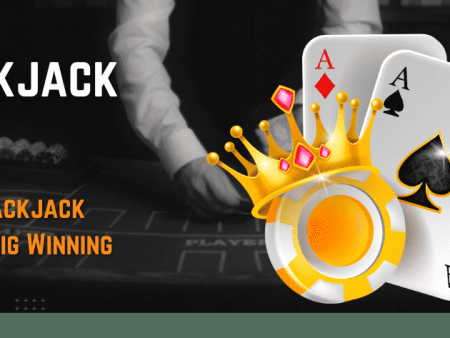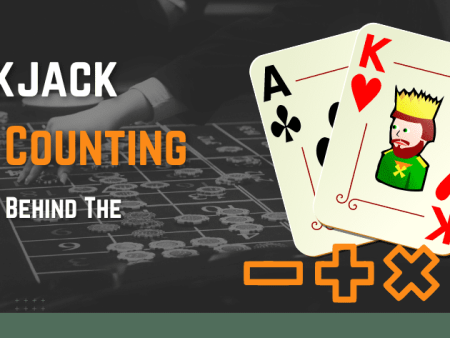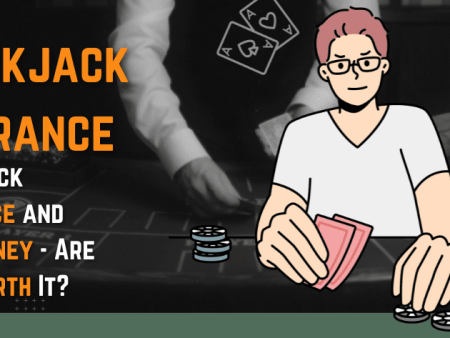Get ready to gain an edge in the blackjack game with a deep understanding of the deck. Discover the secrets of what, when, and how of the blackjack deck, and watch your potential winning soar. It’s not just about a mere pack of cards but a strategic masterpiece that can turn the tables in your favour. As a popular casino game loved by players worldwide, blackjack card offers an exciting challenge.
While playing blackjack cards, your ultimate goal is to achieve a hand of 21 or come as close as possible without busting before the dealer does the same. And the key to achieving this goal lies in the blackjack card you are dealt and how many decks are in play. Don’t leave it up to chance – understand how the number of decks affects your gameplay and chances of winning. It’s time to unlock the secrets of blackjack game cards and elevate your game to the next level. Let’s dive in and understand the strategic importance of blackjack decks!
The Standard Blackjack Deck
Just as you get to know your tools before starting a job, you must get to know your deck before playing blackjack. Here’s all you need to know.
1. Definition of a Standard Deck
A “pack of cards” or a “deck” has been used throughout history for different card games. A standard deck has evolved in time and has come down to a 52-card deck comprising four suits.
2. The Four Suits – Spades, Hearts, Clubs, and Diamonds
The four suits of a standard deck are divided into 13 ranks each. All suits are classified into 4 different categories: two blacks(club and spade) and two reds (heart and diamond). Generally, spades and hearts are considered major suits, while diamonds and clubs are minor.
The 13 cards in each suit are numbered from 2 to 10, with three face cards and an ace.
3. The Face Cards – Jack, Queen, and King
In the blackjack game, each face card holds a value of 10. So, let’s say you’re dealt the following two blackjack cards: a queen of spades with a 7 of hearts. This brings your hand to a total of 17. The same goes for all face cards, no matter which suits they belong to.
4. The Numbered Cards – 2 to 10
All numbered blackjack cards are counted for their values. Dealing a 5 of diamond and 9 of the club gives you a hand of 9+5 = 14.
5. The Ace – its Importance in The Game
Ace is the most crucial card in your deck, and a lot depends on this one card for winning. Players often wish to get an ace in their first two cards because it gives them a value of 11. But there’s a catch: ace is also counted as 1 when the total gives you an excess of 21.
The Number of Blackjack Decks Used
Gone are the days when blackjack was a game of single deck. Modern casinos mostly prefer multiple decks, which can go as high as 6-8. But if you’re lucky, you can play with 1 deck with relatively smaller bets.
1. Different Variations of Blackjack
Variations according to the number of decks in blackjack are:
- Single-deck blackjack
- Double-deck blackjack
- Multiple-deck blackjack
How many decks of blackjack cards are used in a game can increase or decrease your house edge.
2. The Number of Decks used in Each Variation
As obvious in the name, each of these variations uses one, two, and more than two decks. We’ll get to know more about each in a moment.
3. Pros and Cons of Playing with More or Fewer Decks
| Pros | Cons | |
| Fewer Decks | Chances of getting a blackjack are high | The House edge is relatively low |
| More Decks | Multiple players can play, and the game is more interesting | House edge is high, and chances of blackjack are low |
4. The Impact of the Number of Decks on the House Edge
House edge is a mathematical advantage the casino has over you. In simpler terms, it calculates how much profit the casino draws from your bet. The lower number of decks, the lower the house edge, and vice versa.
Single-Deck Blackjack
One of the oldest forms of blackjack involved is a single deck. This variation is still played widely worldwide and is preferred by most players. Let’s get to know why.
1. Rules of Single-Deck Blackjack
The basic rules of single-deck blackjack are the same as in a regular game. Some general guidelines are:
- 1 deck of cards is used.
- You cannot split cards more than thrice.
- Dealer hits on soft 17.
- Aces can split, but a face card of such aces will not make a blackjack.
2. Advantages and Disadvantages of Playing Single-Deck Blackjack
| Blackjack | Advantages | Disadvantages |
| Single-Deck Blackjack | Lower House Edge | Increased Variance |
| Easier Card Counting | Lower Payouts |
3. Is Single-Deck Blackjack Better?
The answer depends on what you’re looking for. If you want a thrilling game with more twists, then no, single-deck 21 may not be your best choice. However, this variation is your best friend if you’re in for a quick win with a low house edge.
4. The Basic Strategy for Single-Deck Blackjack
- Always hit if your hand is between 5-8
- Always double down if your hand is 11
- Always stand if your hand is between 17-20
- Hit if your hand is between 12-16 when the dealer’s 7-11
- Counting cards work exceptionally well
Double-Deck Blackjack
Does twice the amount of cards affect your blackjack gameplay? The answer depends on so many things. Here are some rules of double-deck variation.
1. Rules of Double-Deck Blackjack
- You play with two decks, a total of 104 cards
- It’s not recommended to take insurance
- Original hands are allowed to split once
- Re-splitting of aces is not allowed
- All other rules remain the same as for classic blackjack
2. Advantages and Disadvantages of Playing Double-Deck Blackjack
| Blackjack | Advantages | Disadvantages |
| Double-Deck Blackjack | Favourable odds and potential for effective card counting | Higher table minimums |
| Faster game pace | Increased variability in outcomes |
3. Why Double-Deck Blackjack?
Compared to multi-deck, double-deck games give you more odds of winning. With fewer blackjack card in the play, your odds of making 21 increase. Card counting is also easier, if not impossible, in this variation. Always make sure the payout is 3:2 instead of 6:5.
4. The Basic Strategy for Double-Deck Blackjack
We can divide the strategy based on whether the dealer can stand or hit after soft 17.
Dealer hit on soft 17
- Do not double, instead hit on a hand of 10 against a 10
- Follow the general rules in other variations when dealers hit soft 17
Dealer stands on soft 17
- Double down when the dealer’s up-card is 2, and you have a hard 9
- Hit on a hand of 16 and the dealer’s up-card of 7-10 or ace
- Hit on a combination of an ace with numbered cards between 2-7
Multiple-Deck Blackjack
When casinos realised they were in trouble with card counting, they started introducing more decks. Multiple decks have their own set of pros and cons for players. Let’s see what they are.
1. Rules of Multiple-Deck Blackjack
- Four, six, or possibly eight decks of blackjack cards are used
- All other rules of classic blackjack apply
2. Advantages and Disadvantages of Playing Multiple-Deck Blackjack
| Blackjack | Advantages | Disadvantages |
| Multiple-deck blackjack | Lower table minimums, allowing for smaller bets | Less favourable odds for players |
| Reduced variability in outcomes | Slower game pace |
3. Is Playing Multiple-Deck Blackjack Worth It?
While card counting doesn’t mostly work in multi-deck (unless you’re very strategic), a payout of 3:2 plays to your benefit. These days, casinos mostly allow a game of multi-decks.
4. The Basic Strategy for Multiple-Deck Blackjack
- Treat 5,5 as a hard 10, do not split
- Always stand on two 10s (including face cards)
- The selection strategy may work when applying card counting
- Double a pair of 10s unless the dealer has ten or ace
- Hit at 11 or lower
Shoe Size and Penetration
Mastering your technique in blackjack cards doesn’t just end with card counting. Two terms often arise when discussing tracking the cards being dealt in the game. These terms, “shoe size” and “penetration,” can improve your gameplay if tracked wisely.
1. The shoe size – how it affects the game
A blackjack shoe is a device the dealer has to hold cards. Shoe size matters since a longer shoe means more decks of blackjack cards in the game.
2. Penetration – its importance in blackjack
Deck penetration is the depth of a blackjack shoe that a dealer goes into. For example, in a game of six decks, if a dealer goes through three decks, the penetration will be:
3/5 = 0.5 x 100 = 50% penetration
A higher penetration means you’re deeper into the decks. You can strategise your card counting and penetration by watching the blackjack shoe.
3. The Impact of Shoe Size and Penetration on Card Counting
A larger shoe size reflects more blackjack cards. Card counting has an inverse relationship with blackjack shoe size. A smaller shoe means you can track your counting better. Card counting helps you increase your bets when you have a positive count. The deeper you go in the shoe, the more your wagers become more profitable the penetration increases.
Card Counting
Edward Thorp is considered the mathematical genius behind inventing the card counting system in blackjack cards. These system(s) allow the player to keep track of cards, assign them values, and calculate their advantage in the game.
Card counting is a blackjack card strategy whereby keeping an eye on the cards being dealt, and you can measure your odds and the advantage you have (if any) on the next hand. This method lets you know how close you are to winning and manage your bets accordingly.
There’s no rocket science involved, and it’s all about basic counting. By keeping track of cards, you’re keeping an eye on the tally of what cards are left by assigning them values. This strategy helps you see the odds of you winning against the dealer.
Frequently Asked Questions (FAQs)
1. What is the difference between single-deck, double-deck, and multiple-deck blackjack?
You play with 1 deck and 2 decks in single and double-deck blackjack. Multiple-deck blackjack can have 4, 6, or 8 decks. Card counting is more effective with a lesser number of cards. Here’s a table of differences between single-deck, double-deck, and multiple-deck blackjack.
| Single-Deck Blackjack | Double-Deck Blackjack | Multiple-Deck Blackjack | |
| Number of Decks | 1 | 2 | More than 2 |
| Odds for Players | Favourable | Moderate | Less Favorable |
| Table Minimums | Typically Lower | In Between | Typically Higher |
| Game Variability | Higher | Moderate | Lower |
| Game Pace | Faster | Faster | Slower |
2. Can I count cards in a single-deck blackjack game?
Counting blackjack cards for a single-deck game is not only possible but also easier and more profitable than multi-deck blackjack.
3. How does the number of decks used affect the house edge?
The House edge has a direct relationship with the number of the deck. The higher number of decks involved, the higher the house edge gets.
4. Is card counting legal?
Card counting is frowned upon by casinos but is not illegal anywhere in Malaysia or the world.
5. How often should the dealer shuffle the cards?
Card shuffling can vary depending on the casino you’re playing at and the blackjack variation. The dealer may shuffle after every couple of hands in a single-deck game. For multi-deck blackjack, the shuffling occurs when 40%-60% of cards are used.
Conclusion
Understanding the deck in a blackjack game is your key to winning. Remember the values of cards and how you can count them in different game variations. While basic strategy is enough to give you an advantage, you can up your game and learn more about advanced strategies. Card counting is another game-changer that you can master by practising. Stay focused on the house edge and your game advantage, then increase or decrease your bets accordingly.
- Episode 8: Roulette Fibonacci Betting System - July 5, 2023
- Episode 8: Baccarat System – Understanding Different Strategies and Approaches - July 5, 2023
- Episode 8: Top 10 Blackjack Tips For Big Winning - July 5, 2023













![Promotion BK8_[GIF]_EN_CN_MY_SG_250x250](https://gamblero.co/wp-content/uploads/2023/09/BK8_GIF_EN_CN_MY_SG_250x250.gif)

